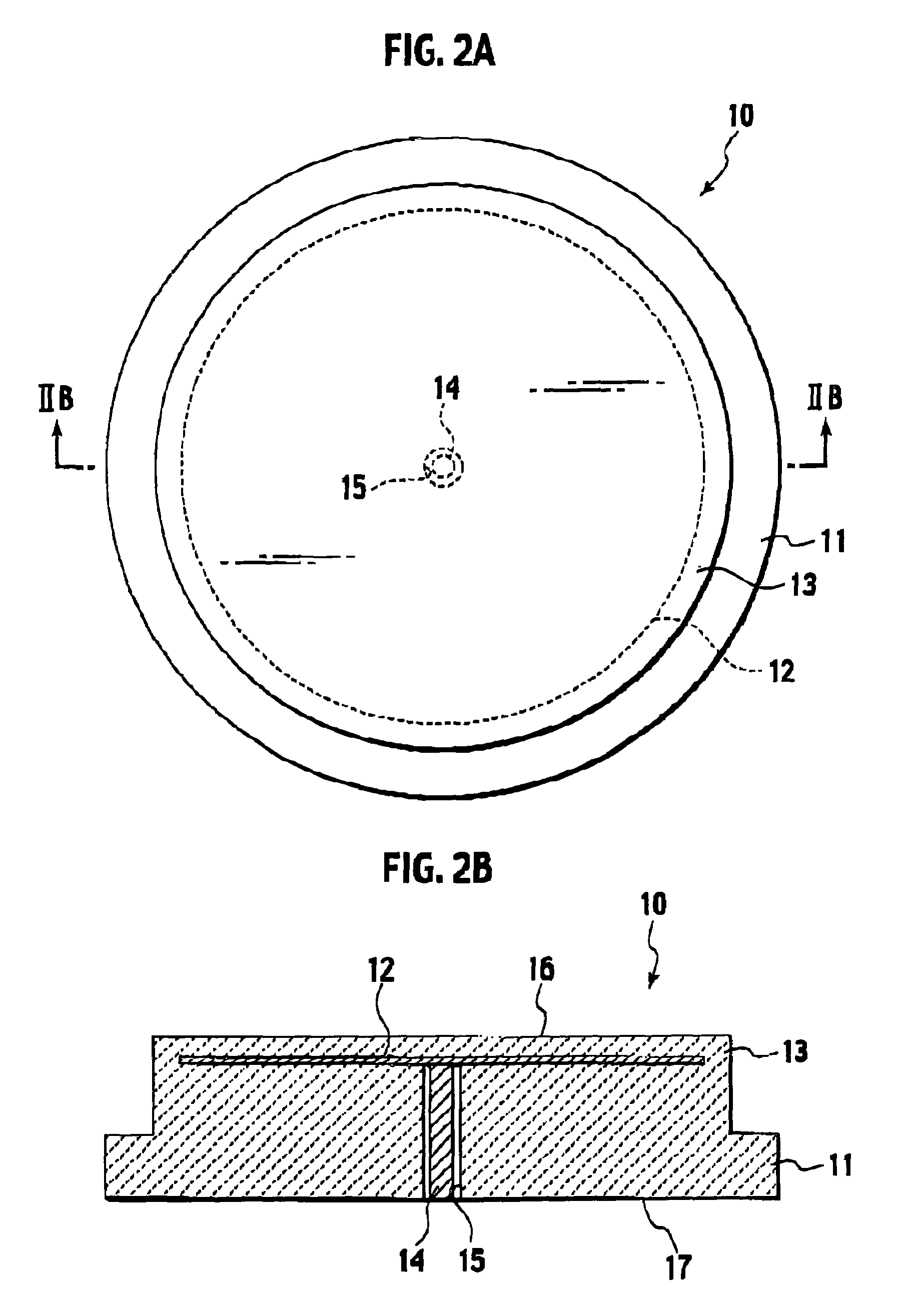Yttria sintered body, ceramic member using yttria sintered body, and manufacturing method of yttria sintered body
a technology manufacturing method, which is applied in the direction of x-ray tubes, electrical equipment, domestic applications, etc., can solve the problems of inferior mechanical strength of yttria sintered body, difficult corrosion prevention, and damage to ceramic members including yttria sintered body in the manufacturing process, so as to achieve high corrosion resistance and mechanical strength
- Summary
- Abstract
- Description
- Claims
- Application Information
AI Technical Summary
Benefits of technology
Problems solved by technology
Method used
Image
Examples
examples
[0100]There will be detailed examples of the embodiments, while the invention is not limited thereto.
[0101](Yttria Sintered Body)
example 10
[0111]An electrostatic chuck 10 was manufactured as illustrated in FIGS. 2A and 2B. First, yttria powder of an average article size of 1 μm and silicon nitride powder of an average article size of 0.5 μm were mixed, by composition ratios of 70% by volume of yttria and 30% by volume of silicon nitride, to provide a raw material powder. Water, a dispersing agent, and polyvinyl alcohol (PVA) as a binder were added to the raw material powder, and mixed therewith by a trommel, to provide a slurry. The slurry was atomized and dried by a spray dryer, and granulated into granules.
[0112]Granules were filled in a molding die, where they were pressed in the direction of a single axis to form a compact. The compact was accommodated in a carbon mold, and sintered by a hot press method in a nitrogen atmosphere at a sintering temperature of 1,900° C., to provide a base body 11 of toughened yttria sintered body.
[0113]Next, a powder mixture of 80% by weight of tungsten carbide 20% by weight of alumi...
example 11
[0118]An electrostatic chuck 40 was manufactured as illustrated in FIGS. 5A and 5B. Water, a dispersing agent, and polyvinyl alcohol (PVA) as a binder were added to a raw material powder of a purity of 99.9% by weight and an average particle size of 1 μm, and mixed therewith by a trommel, to provide a slurry. The slurry was atomized and dried by a spray dryer, and granulated into granules.
[0119]Granules were filled in a molding die, where they were pressed in the direction of a single axis to form a compact. The compact was accommodated in a carbon mold, and sintered by a hot press method in a nitrogen atmosphere at a sintering temperature of 1,600° C., to provide a dielectric layer 13 of a high-permittivity yttria sintered body of a relative inductive capacity of 11.7 by a purity of 99.9% by weight or more.
[0120]Next, like the case of example 10, a print paste was prepared, and an electrostatic electrode 12 of a size of 290 mm diameter by 20 μm thickness was formed on the dielectri...
PUM
| Property | Measurement | Unit |
|---|---|---|
| grain size | aaaaa | aaaaa |
| flexural strength | aaaaa | aaaaa |
| volume resistivity | aaaaa | aaaaa |
Abstract
Description
Claims
Application Information
 Login to View More
Login to View More - R&D
- Intellectual Property
- Life Sciences
- Materials
- Tech Scout
- Unparalleled Data Quality
- Higher Quality Content
- 60% Fewer Hallucinations
Browse by: Latest US Patents, China's latest patents, Technical Efficacy Thesaurus, Application Domain, Technology Topic, Popular Technical Reports.
© 2025 PatSnap. All rights reserved.Legal|Privacy policy|Modern Slavery Act Transparency Statement|Sitemap|About US| Contact US: help@patsnap.com



